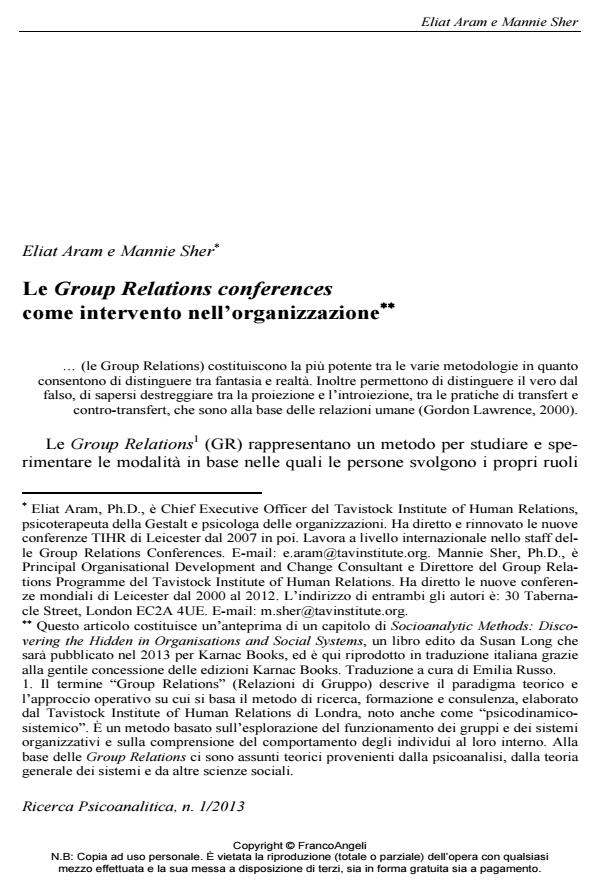Le Group Relations conferences come intervento nell’organizzazione
Titolo Rivista RICERCA PSICOANALITICA
Autori/Curatori Eliat Aram, Mannie Sher
Anno di pubblicazione 2013 Fascicolo 2013/1
Lingua Italiano Numero pagine 18 P. 89-106 Dimensione file 677 KB
DOI 10.3280/RPR2013-001006
Il DOI è il codice a barre della proprietà intellettuale: per saperne di più
clicca qui
Qui sotto puoi vedere in anteprima la prima pagina di questo articolo.
Se questo articolo ti interessa, lo puoi acquistare (e scaricare in formato pdf) seguendo le facili indicazioni per acquistare il download credit. Acquista Download Credits per scaricare questo Articolo in formato PDF

FrancoAngeli è membro della Publishers International Linking Association, Inc (PILA)associazione indipendente e non profit per facilitare (attraverso i servizi tecnologici implementati da CrossRef.org) l’accesso degli studiosi ai contenuti digitali nelle pubblicazioni professionali e scientifiche
Questo articolo individua le Group Relations (GR) come metodo di studio sui gruppi e come forma di osservazione del modo in cui le persone svolgono il loro ruolo all’interno dei gruppi e dei sistemi. Il metodo aiuta a distinguere tra fantasia e realtà, tra verità e falsità, a fare i conti tra proiezione e introiezione, transfert e controtransfert. L’articolo descrive le caratteristiche del lavoro delle GR, incluso il lavoro con i fenomeni legati al transfert e al contro-transfert; l’abilità nell’interpretazione delle dinamiche inconsce di gruppo; la conoscenza del lavoro entro i confini dello spazio e del tempo, così come quelli all'interno dei confini psicologici; la chiarezza circa il lavoro sui ruoli e sui compiti; il lavoro con gli aspetti fenomenici del gruppo come-un-tutto avendo la capacità di generare ipotesi di lavoro sul gruppo e sul suo funzionamento organizzativo.
Parole chiave:Tavistock; Group Relations; dinamiche; inconscio; proiezione; introiezione; transfert; controtransfert
Eliat Aram, Mannie Sher, Le Group Relations conferences come intervento nell’organizzazione in "RICERCA PSICOANALITICA" 1/2013, pp 89-106, DOI: 10.3280/RPR2013-001006